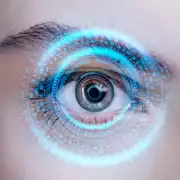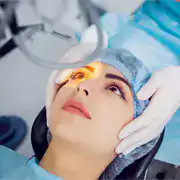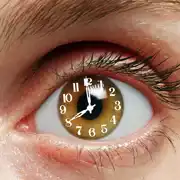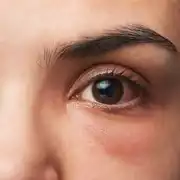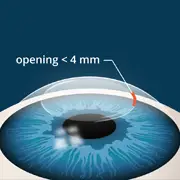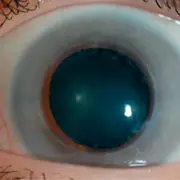What Is Advanced Surface Ablation / PRK
Advanced Surface Ablation is a modern Laser Eye Surgery which is used to correct spectacle power. It is a modification of the technique of Photorefractive Keratectomy or PRK. PRK was one of the first Laser Surgeries ever performed during the early phases of modern Refractive Surgery. However this Laser Eye Surgery had lost popularity as LASIK Surgery entered into the arena. However, there has been a resurgence of PRK in recent years owing to its numerous advantages. Unlike LASIK Surgery, in PRK Laser Eye Surgery, no flap is created.
This has two major advantages. Firstly, the strength of the Cornea lost due to the creation of the flap is avoided. This allows for spectacle power correction to be performed for cases of thin Corneas. The correction would happen in just half of the thickness of a standard flap used in LASIK Surgery! This tissue sparing advantage of PRK ensures stable and safe outcomes for patients undergoing Laser Eye Surgery for mild to moderate amounts of spectacle power. Secondly, early and late flap related complications are avoided.
This Laser Eye Surgery is preferred in patients who lead an extremely active lifestyle and engage in contact sports, where chances of flap dislocation is very high. However, the drawback of PRK is that since it involves the removal of the superficial-most layer of the cornea in order to perform the Laser Eye Surgery, patients tend to experience mild discomfort for 3-4 days after the procedure until this layer heals.
At Sri Eye Care, we perform the Advanced Surface Ablation technique in which the post operative discomfort is minimum. Hence patients don't have to compromise on the safety of their eyes to choose other painfree techniques of Laser Eye Surgery such as LASIK. Advanced Surface Ablation can also be performed using wavefront optimisation and can also be planned with the CONTOURA Vision, thereby ensuring the best visual quality after Laser Eye Surgery!
Eye problems that can be treated with Advanced Surface Ablation / PRK
| Treatment | Myopia | Astigmatism | Hyperopia |
|---|---|---|---|
| Advanced Surface Ablation |
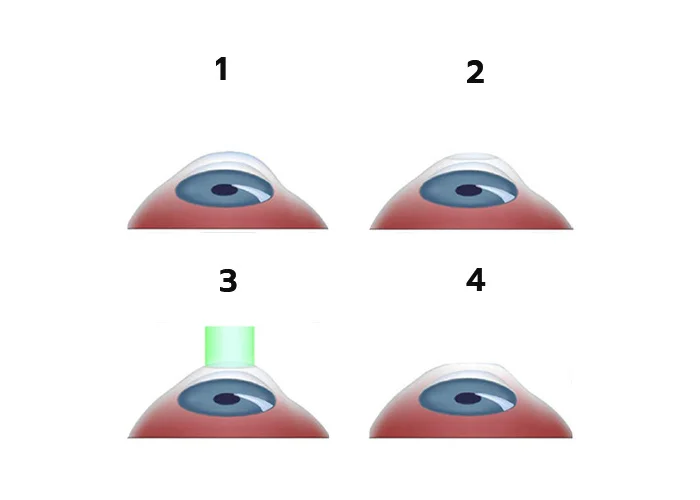
At Sri Eye Care, we perform the Advanced Surface Ablation technique in which the post operative discomfort is minimum. Hence patients don't have to compromise on the safety of their eyes to choose other painfree techniques of Laser Eye Surgery such as LASIK. Advanced surface ablation can also be performed using wavefront optimisation and can also be planned with the CONTOURA Vision, thereby ensuring the best visual quality after Laser Eye Surgery!
Benefits of Advanced Surface Ablation
World Class Technology
Laser Surgery technology for power correction by PRK has advanced by leaps and bounds in the last two decades. From a surgical procedure reserved for only thin and borderline corneas, PRK Surgery today has made a comeback and is being preferred over LASIK even in regular cases. In keeping up with technological advancements world-over, the surgeons at Sri Eye Care work on the Alcon Wavelight™ EX500 flying spot Laser Treatment system.
This is one of the most advanced Excimer Laser Surgery machines available to treat refractive errors and takes just 1.4 seconds per diopter of power correction. The EX500 Laser Surgery equipment is also synced to the Topolyzer™ Corneal Analyser tool which captures every single surface point of the patient's Cornea. This way, the treatment is customized for every patient's eye thereby ensuring best visual outcomes. This topographic guided treatment is known as CONTOURA® Vision.
- A surgical tool term as a Microkeratome or a Femtosecond Laser is used to create a thin, circular flap in the Cornea. Further it is used to access the underlying Cornea (called the Stroma).
- An Excimer Laser is used to reshape the Corneal Stroma.
- The cornea is laid back in place, restoring the vision without stitches
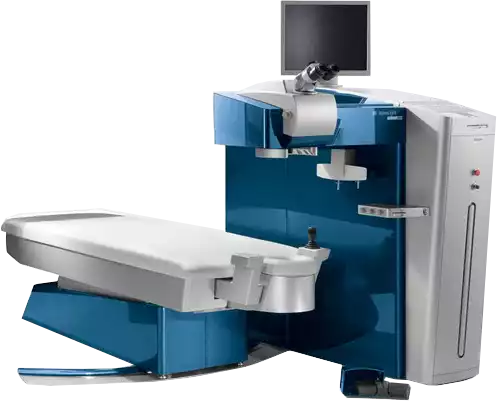
Eye Problems that can be Treated with Photorefractive Keratectomy
Nearsightedness
Myopia or short-sightedness is a condition wherein far objects are difficult to visualize. Myopia usually occurs when the rays of light entering our eyes focus in front of our Retina, instead of focusing directly on it. Myopia is one of the most common conditions for which patients undergo Laser Surgery!


Farsightedness
Hypermetropia or far-sightedness is a condition wherein far objects are difficult to visualize. It usually occurs when the rays of light entering our eyes focus behind our Retina, instead of focusing directly on it.
Astigmatism
Astigmatism is a condition which causes distortion of the vision, both for far as well as near. In this condition, all the rays of the light entering the eye at different axes do not converge onto the Retina. Instead one or more rays of light may fall in front or back of the Retina, while the other set of rays may fall on the Retina or in front of it. Astigmatism contributes to the cylindrical power of the eyes, and is usually due to the difference in the shape of the cornea in one axis as compared to the other. However, even our natural lens of the eye can also cause astigmatism.

Advanced Surface Ablation
Before Advanced Surface Ablation
Before opting for Laser Eye Surgery, it is advised to first make sure that you are eligible for Surgery. Consulting your Ophthalmologists will give you clear information about your eye condition and whether your eyes are suitable to proceed further with the Laser Surgery. After a comprehensive eye examination, your Laser Eye Surgery specialist would advise on the type of Laser Eye Surgery you may be suitable for.
You will also have to undergo a scan to check the parameters of your Cornea before proceeding with the Laser Surgery. At this time, your Refractive Surgery specialist may advise if ASA would be the best option for you. If you are planning to combine Contoura vision correction with the ASA, an additional scan by the Topolyser scan may be undertaken to map 22000 points on the cornea, which will be able to highlight the microscopic irregularities.
Before fixing your appointment to check for suitability of laser vision correction, it is advisable to discontinue wearing your Contact Lenses prior to the date of your appointment. The time period varies with the type of contacts you wear and you are advised to follow the instructions recommended by your Ophthalmologists for the betterment and success of your Laser Treatment. You can continue wearing your spectacles as advised and it would also help to bring all your previous spectacle prescriptions to check for the stability of your eye power.
When you meet your Refractive Surgery Specialist, please inform them about any other medications you may be taking for other issues in the body, including skin creams, treatment for acne, thyroid, etc. During our Eye Evaluation, many parameters and measurements are taken to best optimize your vision after the ASA Eye Surgery, which will be extremely important for planning the treatment. Once your date for the surgery has been confirmed, eye drops may be prescribed to be started a day before the surgery.
View More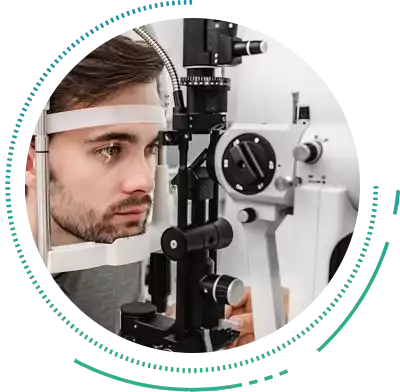
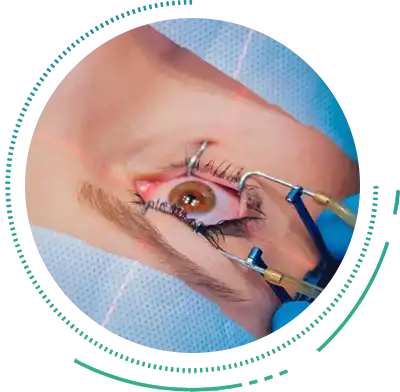
During Advanced Surface Ablation
Advanced surface ablation is performed only with the help of numbing eye drops. So patients do not experience any pain. However, there may be other mild sensations such the feeling of water flowing on the eye or a gentle pressure-like sensation during the procedure. Patients may also hear sounds of the Laser machine and its accessories during the treatment which can at times catch them off guard. It is extremely important that you are completely relaxed throughout the procedure. ASA procedure is a two step process.
In the first step, the superficial layer of the cornea is removed to expose the underlying layer of the Cornea. This is called as the Stroma on which the excimer laser equipment performs the programmed laser surgery and precisely re-shapes the cornea. Once the laser re-shaping is complete, the light falling onto the eye will focus precisely onto the retina without the need of spectacles or contact lenses.
If Contoura Vision has been planned, the microscopic irregularities on the cornea are also treated during the laser surgery. Once the laser treatment is complete, a temporary soft contact lens is placed to reduce the discomfort and aid in healing of the superficial layer. This contact lens is removed after 3-4 days of time.
After Advanced Surface Ablation
With PRK, it is extremely common to experience pricking and watering during the first 2 to 3 days of recovery after the procedure. This sensation is relatively reduced in ASA. The vision recovery in PRK/ASA takes about one month, which is longer than LASIK or ReLEx SMILE. However, the quality of vision in PRK or ASA is the same as compared to LASIK or Relex.
You are given eye drops and medications which will have to be applied without fail. Protective goggles will have to be worn for a period of 1 week. You also need to avoid washing your face and hair for a period of one week until the superficial layer heals. However, once the healing process is completed, vision is extremely clear and due to the flapless nature of the Laser Surgery, it is extremely safe in the long run.

Frequently Asked Questions
Does Laser Eye Surgery hurt?
Laser Eye Surgery is usually painless, but you may experience a kind of pressure in your eyes during the procedure, but this may be temporary
How long does Laser Eye Surgery take?
Laser Eye Surgery takes a maximum of 30 minutes, but in most cases it is done within 10-12 minutes
When can I go back to work after having Laser Eye Surgery?
If you have undergone ReLEx SMILE or LASIK, you can resume your work the next day after your procedure. You are advised to have someone nearby after the surgery, to get support for safe travel, as your eyes strain to sight the bright light. At Sri Eye Care, our Eye Doctors at our Eye Care Hospital in Bangalore, practice Lasik Surgery With PRK/ASA it may need 5-7 days to resume your work. However, you may need to wait until your eyes become fully comfortable and clear. You are also advised to as your surgeon post-surgery before resuming your job.
Is Laser Eye Surgery safe?
With modern day Laser Technology, Laser Eye Surgery is extremely safe. Our team of specialists always use the highest safety parameters and keep a high ceiling safety profile before advising Laser correction for all patients.
Should I keep reading glasses with Laser Eye Surgery?
See, the Laser Surgery aims to provide a 'permanent' solution to your eyes, but it has to be accepted that your eyes change with age, reading glasses are optional with the surgery. However, using them may be an added advantage.
When is LASIK Eye Surgery procedure not recommended?
Laser Eye Surgery is usually not recommended for people where the spectacle power has not stabilised. Laser eye surgery is not done for individuals below 18 years. An Eye with Keratoconus is a strict no-no for undergoing any kind of Eye Surgery. Also, if the corneal profile and thickness are not suitable, your surgeon may defer the procedure or offer any other alternate means of achieving spectacle free vision
What is SMILE Xtra or LASIK Xtra? Do I need this procedure instead of normal SMILE or LASIK?
SMILE Xtra and LASIK Xtra are recently introduced procedures that offer an additional layer of protection for the Cornea after Surgeries. This process combines SMILE/LASIK procedure with Riboflavin assisted Corneal Collagen Cross Linking [C3R] procedure to aid in strengthening of the corneal layers. SMILE/LASIK Xtra procedure is not recommended for all patients undergoing Laser Eye Surgery. It will only be recommended by our specialists only if your corneal profile is borderline or shows some indications of future thinning.
What is bladeless LASIK?
Are there any advantages of ReLEx™ SMILE over conventional LASIK? Bladeless LASIK or Femto LASIK is an all-laser LASIK wherein even the creation of the flap is performed by Femtosecond LASER. The thickness and accuracy of the flap depth is more precise with this method as compared to conventional Lasik procedure.
Is ReLEx™ SMILE the same as Bladeless/FemtoLASIK?
While ReLEx™ SMILE is also an all laser procedure, it however does not need the creation of a corneal flap for correction of the power. Here a disc shaped tissue called as the “lenticule” is fashioned by the femtosecond layer which is extracted through a 2mm incision.
What is CONTOURA® vision? Do I need Contoura™ vision instead of LASIK?
Contoura vision is an advanced type of LASIK Surgery. Here, microscopic irregularities on the patient’s cornea are mapped on the corneal topographer. These irregularities are then transferred to the LASIK suite. At Sri Eye Care, we use the Alcon WAVELIGHT™ suite which automatically maps and corrects these irregularities while also correcting the power. Contoura™ vision is required only for patients who have significant irregularities on their cornea. If not a simple LASIK would suffice.
Should I choose ReLEx™ SMILE over LASIK for my eyes?
Normally your specialist, after performing a thorough evaluation, would suggest the ideal procedure recommended for your eyes. However, if you are deemed to be suitable for both ReLEx™ SMILE as well as LASIK, you can take a conscious decision based on the relative advantages of SMILE over LASIK. The flapless nature of ReLEx™ SMILE makes healing of the incision faster (within 48 hours as compared to 5-7days with LASIK). Since a flap is created in LASIK, it causes a larger proportion of corneal nerves to be severed. These corneal nerves are important for tear production and hence patients experience dry eyes post-operatively. However, in SMILE since no flap is created, the post-operative dry eye is significantly lesser as compared to LASIK.
This advantage might be more relevant in people who work on computers for long hours who may be more prone to dry eyes. The flapless nature of this procedure also affords a higher safety profile for those who have an active lifestyle and play contact sports. Post LASIK there are minor chances of the flap being dislocated due to any injury. This risk is not there in SMILE. Although SMILE does have some advantages over LASIK, the visual recovery and accuracy of vision correction is equal in both procedures.


